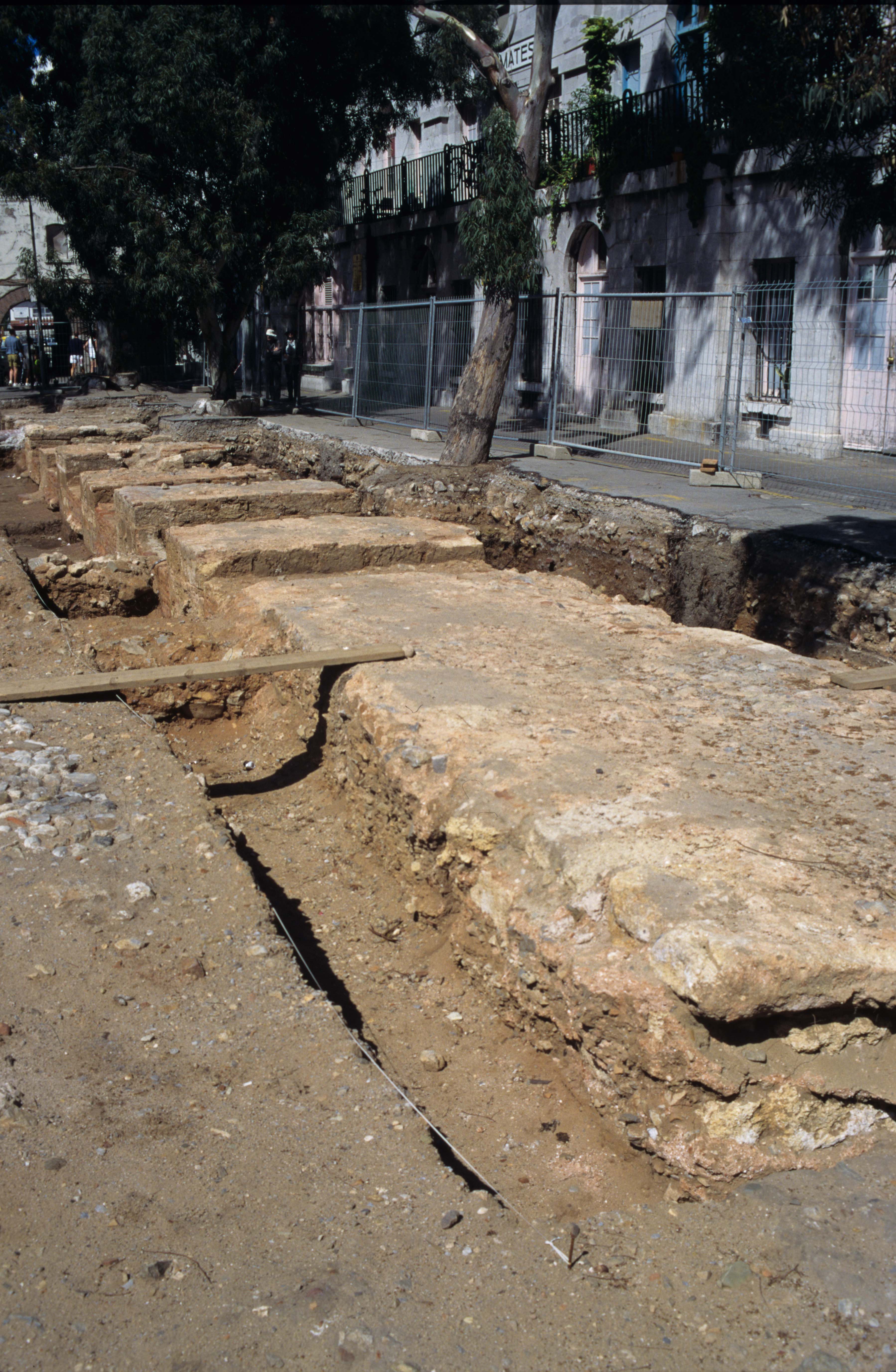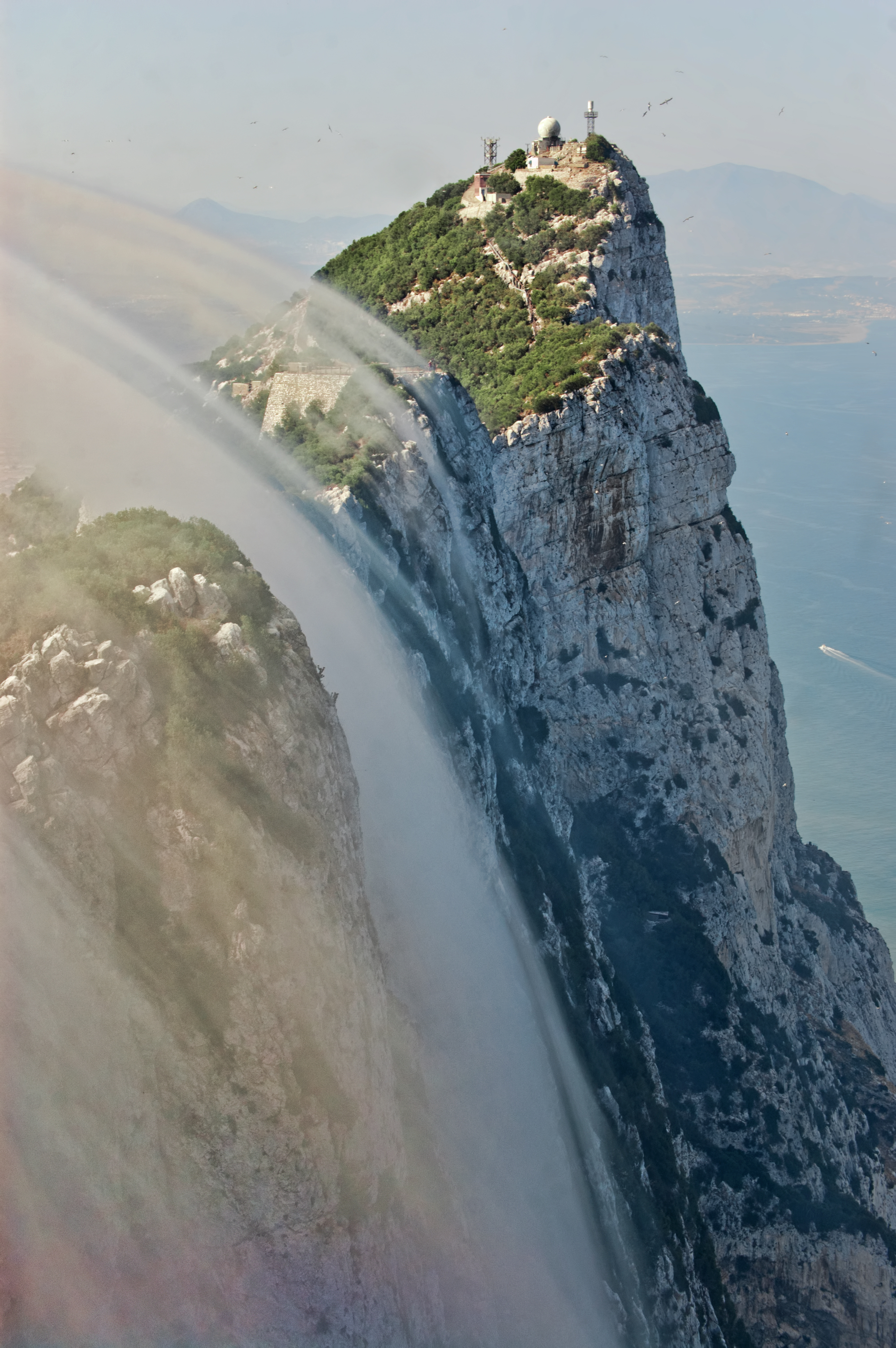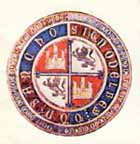|
Grand Casemates Square
Grand Casemates Square (colloquially Casemates Square or Casemates) is the larger of the two main squares within the city centre of Gibraltar (the other being John Mackintosh Square). The square takes its name from the British-built Grand Casemates, a casemate and bombproof barracks at the northern end of the square completed in 1817. Located at the northern end of Main Street, the square is lined with numerous pubs, bars and restaurants and acts as the gateway into Gibraltar's city centre for most tourists. History Grand Casemates Square dates back to Gibraltar's Moorish period when the place was first fortified, making it as old as the city itself. Moorish period The square is built on sand that was once a beach. In May 1160 Moroccans sent by the Almohad ruler Abd al-Mu'min landed to lay the foundations of the first substantial settlement. This "City of Victory" (Medinat al-Fath) was small and included the area within the Moorish Castle and the land just below. It was th ... [...More Info...] [...Related Items...] OR: [Wikipedia] [Google] [Baidu] |
Rock Of Gibraltar
The Rock of Gibraltar (from the Arabic name Jabel-al-Tariq) is a monolithic limestone promontory located in the British territory of Gibraltar, near the southwestern tip of Europe on the Iberian Peninsula, and near the entrance to the Mediterranean. It is high. Most of the Rock's upper area is covered by a nature reserve, which is home to around 300 Barbary macaques. These macaques, as well as a labyrinthine network of tunnels, attract many tourists each year. The Rock of Gibraltar, one of the two traditional Pillars of Hercules, was known to the Romans as ''Mons Calpe'', the other pillar being ''Mons Abila'', either Monte Hacho or Jebel Musa on the African side of the Strait. According to ancient myths fostered by the Greeks and the Phoenicians, and later perpetuated by the Romans, the two points marked the limit to the known world, although the Phoenicians had actually sailed beyond this point into the Atlantic, both northward and southward. The Mediterranean Sea surroun ... [...More Info...] [...Related Items...] OR: [Wikipedia] [Google] [Baidu] |
Intertidal Zone
The intertidal zone, also known as the foreshore, is the area above water level at low tide and underwater at high tide (in other words, the area within the tidal range). This area can include several types of habitats with various species of life, such as seastars, sea urchins, and many species of coral with regional differences in biodiversity. Sometimes it is referred to as the ''littoral zone'' or '' seashore'', although those can be defined as a wider region. The well-known area also includes steep rocky cliffs, sandy beaches, bogs or wetlands (e.g., vast mudflats). The area can be a narrow strip, as in Pacific islands that have only a narrow tidal range, or can include many meters of shoreline where shallow beach slopes interact with high tidal excursion. The peritidal zone is similar but somewhat wider, extending from above the highest tide level to below the lowest. Organisms in the intertidal zone are adapted to an environment of harsh extremes, living in water pr ... [...More Info...] [...Related Items...] OR: [Wikipedia] [Google] [Baidu] |
Great Siege Of Gibraltar
The Great Siege of Gibraltar was an unsuccessful attempt by Spain and France to capture Gibraltar from the British during the War of the American Revolution. It was the largest battle in the war by number of combatants. The American war had ended with the British defeat at Yorktown in October 1781, but the Bourbon defeat in their great final assault on Gibraltar would not come until September 1782. The siege was suspended in February 1783 at the beginning of peace talks with the British. On 16 June 1779, Spain entered the war on the side of France and as co-belligerents of the revolutionary United Colonies—the British base at Gibraltar was Spain's primary war aim. The vulnerable Gibraltar garrison under George Augustus Eliott was blockaded from June 1779 to February 1783, initially by the Spanish alone, led by Martín Álvarez de Sotomayor. The blockade proved to be a failure because two relief convoys entered unmolested—the first under Admiral George Rodney in 1780 and th ... [...More Info...] [...Related Items...] OR: [Wikipedia] [Google] [Baidu] |
William Green (general)
General Sir William Green, 1st Baronet, of Marass, Kent (4 April 1725 – 10 January 1811) was an officer in the British Army. After receiving a private education in Aberdeen, Scotland and a military education at the Royal Military Academy in Woolwich, England, he was appointed as a practitioner engineer in 1743. Green served on the European continent until 1752, after which he was in Canada. There, he continued to advance through both the ordinary military and engineering ranks. Following his return to England, Green was named senior engineer for Gibraltar about 1761, and the next year promoted to lieutenant colonel. He was promoted to chief engineer for Gibraltar in 1770, and designed and executed a number of military works on the Rock. In 1772, his idea of a regiment of military artificers, to replace the civilian mechanics who had formerly constructed military works, came to fruition in the form of the Soldier Artificer Company, the predecessor of the Corps of Royal Sappers ... [...More Info...] [...Related Items...] OR: [Wikipedia] [Google] [Baidu] |
Chief Engineer
A chief engineer, commonly referred to as "ChEng" or "Chief", is the most senior engine officer of an engine department on a ship, typically a merchant ship, and holds overall leadership and the responsibility of that department..Chief engineer's rank is equivalent to the rank of a ship's captain. As a person who holds one of the most senior roles on the ship, they must have excellent communication and leadership skills. They will be expected to regularly work alongside other crew members and external consultants, and most importantly, provide guidance to their team. To be a chief engineer, an engineer must attain a chief engineer's license appropriate to the tonnage, power rating, and type of ship that they are employed on. A chief engineer is ultimately responsible for all operations and maintenance that has to do with any and all engineering equipment throughout the entire ship, and supervises all other engineering officer and engine ratings within the department. United Stat ... [...More Info...] [...Related Items...] OR: [Wikipedia] [Google] [Baidu] |
Last Public Hanging At Grand Casemates Square
A last is a mechanical form shaped like a human foot. It is used by shoemakers and cordwainers in the manufacture and repair of shoes. Lasts typically come in pairs and have been made from various materials, including hardwoods, cast iron, and high-density plastics. The term is derived from the Proto-Germanic *''laistaz'' ("track, trace, footprint"); cognates include Swedish ''läst'', Danish ''læste'', German ''Leisten''. Production Lasts come in many styles and sizes, depending on the exact job they are designed for. Common variations include simple one-size lasts used for repairing soles and heels, durable lasts used in modern mass production, and custom-made lasts used in the making of bespoke footwear. Though a last is made approximately in the shape of a human foot, the precise shape is tailored to the kind of footwear being made. For example, a boot last would be designed to hug the instep for a close fit. Modern last shapes are typically designed using dedicated compu ... [...More Info...] [...Related Items...] OR: [Wikipedia] [Google] [Baidu] |
Silting
Siltation, is water pollution caused by particulate terrestrial clastic material, with a particle size dominated by silt or clay. It refers both to the increased concentration of suspended sediments and to the increased accumulation (temporary or permanent) of fine sediments on bottoms where they are undesirable. Siltation is most often caused by soil erosion or sediment spill. It is sometimes referred to by the ambiguous term "sediment pollution", which can also refer to a chemical contamination of sediments accumulated on the bottom, or to pollutants bound to sediment particles. Although "siltation" is not perfectly stringent, since it also includes particle sizes other than silt, it is preferred for its lack of ambiguity. Causes The origin of the increased sediment transport into an area may be erosion on land or activities in the water. In rural areas, the erosion source is typically soil degradation by intensive or inadequate agricultural practices, leading to soil eros ... [...More Info...] [...Related Items...] OR: [Wikipedia] [Google] [Baidu] |
North Mole, Gibraltar Harbour
The North Mole is a breakwater located in the northern section of Gibraltar Harbour, in the British Overseas Territory of Gibraltar, at the southern end of the Iberian Peninsula. The North Mole, with the rest of harbour, is just north of the east entrance to the Strait of Gibraltar. The breakwater was formerly known as the Commercial Mole, and is the site of the commercial port in the harbour. It was the consequence of a late nineteenth century plan by the British Admiralty to create a modern dockyard and large defensive harbour in Gibraltar. Infrastructure The North Mole at Gibraltar Harbour ''(pictured)'', in the British Overseas Territory of Gibraltar, at the southern end of the Iberian Peninsula, is one of a trio of breakwaters ''(shown on map)'' that provides protection to the harbour, in addition to that which results from the presence of the Rock of Gibraltar on its east side. The North Mole is positioned at the northern and western aspects of the northern section of the ha ... [...More Info...] [...Related Items...] OR: [Wikipedia] [Google] [Baidu] |
Water Gate
A watergate (or water gate) is a fortified gate, leading directly from a castle or town wall directly on to a quay, river side or harbour. In medieval times it enabled people and supplies to reach the castle or fortification directly from the water, and equally allowed those within the castle direct access to water transport. Examples * Bristol Castle * Newport Castle * Southampton Castle * The Traitors' Gate at the Tower of London The Tower of London, officially His Majesty's Royal Palace and Fortress of the Tower of London, is a historic castle on the north bank of the River Thames in central London. It lies within the London Borough of Tower Hamlets, which is separa ... See also * Irrigation gate References Types of gates Castle architecture City walls {{castle-stub ... [...More Info...] [...Related Items...] OR: [Wikipedia] [Google] [Baidu] |
Galley House
A galley is a type of ship that is propelled mainly by oars. The galley is characterized by its long, slender hull, shallow draft (hull), draft, and low freeboard (nautical), freeboard (clearance between sea and gunwale). Virtually all types of galleys had sails that could be used in favorable winds, but human power, human effort was always the primary method of propulsion. This allowed galleys to navigate independently of winds and currents. The galley originated among the seafaring civilizations around the Mediterranean Sea in the late second millennium BC and remained in use in various forms until the early 19th century in naval warfare, warfare, trade, and piracy. Galleys were the warships used by the early Mediterranean naval powers, including the Ancient Greece, Greeks, Illyrians, Phoenicians, and ancient Rome, Romans. They remained the dominant types of vessels used for war and piracy in the Mediterranean Sea until the last decades of the 16th century. As warships, galleys ... [...More Info...] [...Related Items...] OR: [Wikipedia] [Google] [Baidu] |
Ferdinand IV Of Castile
Ferdinand IV of Castile (6 December 1285 – 7 September 1312) called the Summoned (''el Emplazado''), was King of Castile and León from 1295 until his death. His upbringing and the custody of his person were entrusted to his mother, Queen María de Molina, while his tutorship was entrusted to his granduncle Henry of Castile the Senator. At that time, and also for the rest of his reign, his mother tried to placate the nobility, confronted her son's enemies, and repeatedly prevented Ferdinand IV from being dethroned. He faced the insubordination of the nobility, led at numerous times by his uncle John of Castile, Lord of Valencia de Campos, and by Juan Núñez II de Lara, who were supported in some occasions by another royal relative, Juan Manuel, Prince of Villena. Like his predecessors on the throne, Ferdinand IV continued the Reconquista and, although he failed to conquer Algeciras in 1309, he captured the city of Gibraltar that same year, and in 1312 the city of Alcaudete wa ... [...More Info...] [...Related Items...] OR: [Wikipedia] [Google] [Baidu] |




.jpg)



